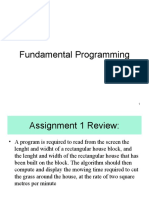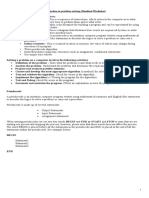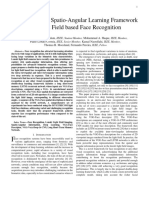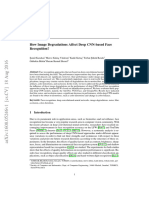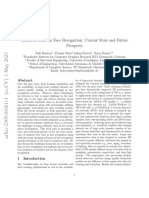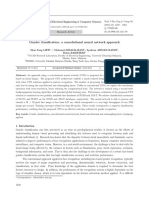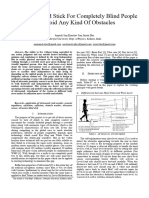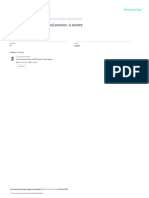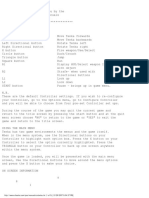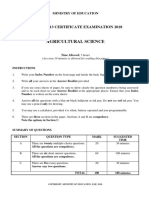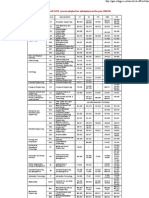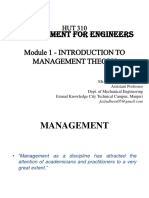UNIT1 - Programming
Week [04] –Algorithms with Pseudocode
1
�Lesson Learning Outcome
Pass Merit Distinction
LO1 Define basic algorithms to carry out an operation and
outline the process of programming an application
P1 Provide a definition of M1 Determine the step taken D1 Examine the
what an algorithm is and from writing code to implementation of an
outline the process in execution. algorithm in a suitable
building an application. language. Evaluate the
relationship between the
written algorithm and the
code variant.
2
�Data Declaration
When writing pseudocode, we usually omit the data declaration part to
keep the simplicity. There are 3 important aspects data considers:
▪ Data Type: This indicates the type of value it can store, such as
integer, string, real etc.
▪ Data Scope: This determines where the data item can be used.
For example, is it Global or Local?
▪ Data Usage: This determines how the data can be used. Can it
be changed (Variables) or is it fixed (Constant)
3
�Receiving Input
▪ There are some keywords that can be Some Examples:
used in pseudocode for receiving input
INPUT marks1, marks2
▪ INPUT : Receive data values from
READ Student_Record
keyboard
GET Emp_Name
▪ GET : Receive data values from
keyboard
▪ READ : Receive data values from a file
4
�Sending Output
▪ When the computer is ready with the Some Examples:
results it has to supply this information to
the display unit or any other output device DISPLAY “Total = “,sum
or a file.
OUTPUT sum,average
▪ DISPLAY : Sends output to the screen
▪ PUT : Sends output to the screen WRITE Emp_Record
▪ OUPUT : Sends output to the screen PRINT name,age
▪ PRINT : Sends the output to the printer
▪ WRITE : Sends out to a file
5
�Assigning Values to Variable
Variables are memory locations identified Some Examples:
by user defined names. It is important
that we store initial values in these INITIALIZE total TO 0
variables.
SET Count to 1
▪ SET : Store an initial value in a
Count = 1
variable
▪ INITIALIZE : Store an initial value in a
variable
▪ “=” : This also could be used
6
�Performing Computer Arithmetic
The results of such computations also must be Some Examples:
stored in variables. Following keywords are
used for this purpose. CALCULATE Sum = x + y
COMPUTE : Perform any arithmetic and store COMPUTE Avg as Sum / 2
the result in a variable
CALCULATE : Perform any arithmetic and ADD marks into Total
store the result in a variable
Sum = x + y
ADD, MULTIPLY, DIVIDE, SUBTRACT : These
can also be used to perform a specific SUBTRACT loan from Salary
arithmetic operation
7
�Procedures and Functions
Procedure : A unit of a program that carries
out some well-defined operation on data
specified by parameters. It can be called
from anywhere in the program and different
parameters can be provided for each call.
Function : The difference between a Procedure and the function is
that the function will return a single value after called, whereas a
procedure does a particular task but not necessarily returns a value.
8
�Parameters
Parameters : These are Data items sent from
a calling module to a function or procedure that
is called. It can serve 1 of the following roles.
▪ Input parameter - Supply input data of the
module
▪ Output parameter - Sends the output of the
module
▪ Input/output parameter - Supply input data
and sends out the changed data
9
�Techniques of Parameter Passing
Call by Value : Module receives a
copy of the original data item as a
parameter. Therefore changes made
within the module doesn't alter
original data.
Call by Reference : Module receives
a reference to the original data item
itself. Therefore any change made
within the module will alter original
data item as well.
10
�Procedure Example
Example1
11
�Function Example
Example1
12
� its
INPUT “Enter Height “, height
INPUT “Enter Width “, width
COMPUTE area = 1 / 2 * height * width
DISPLAY “Area = “,area
13
�INPUT “Enter Limit “,Last
Count = 1
Sum = 0
WHILE Count <= Last
Sum = Sum + Count
Count = Count + 1
END WHILE
DISPLAY “Total = “,Sum
14
�FOR Num = 1 TO 10 STEP 1
Rem = Num MOD 2
IF Rem = 0 THEN
Type = “Even”
ELSE
Type = “Odd”
END IF
DISPLAY Num, “: “, Type, “ Number”
END FOR
15
�INPUT “Enter 3 Numbers”, Left, Mid, Right PROCEDURE Swap(First, Second)
IF Mid < Left THEN
Hold = First
Call Swap(Left, Mid)
END IF First = Second
IF Right < Left THEN Second = Hold
Call Swap(Left, Right)
END PROCEDURE
END IF
IF Right < Mid THEN
Call Swap(Mid, Right)
END IF
DISPLAY Left, Mid, Right
16
�INPUT “Start & Stop”, N1, N2 FUNCTION FindSum (First, Last)
WHILE N1 <> N2 Tot = 0
IF N1 > N2 THEN
FOR Num = First TO Last STEP 1
DISPLAY “Invalid Data”
ELSE Tot = Tot + Num
DISPLAY “Tot = “,FindSum(N1, N2) END FOR
END IF RETRUN Tot
INPUT “Start & Stop”, N1, N2 END FUNCTION
END WHILE
17
�INPUT “Enter Sentence ”, Str
INITIALIZE all Counters
FOR X = 1 TO LENTGH of Str
Ch = Str[X] // Take current character into Ch
CASE Ch OF
‘a’, ’A’ : aCount = aCount + 1
‘e’, ’E’ : eCount = eCount + 1
‘i’, ’I’ : iCount = iCount + 1
‘o’, ’O’ : oCount = oCount + 1
‘u’, ’U’ : uCount = uCount + 1
END CASE
END FOR
DISPLAY all Counters
18
�Lesson Summary
▪ Data Declaration
▪ Receiving Input / Sending Output
▪ Initializing Variables / Computations
▪ Functions / Procedures
▪ Parameters and their roles
▪ Call by Value / Call by Reference
▪ Exercises
19
























